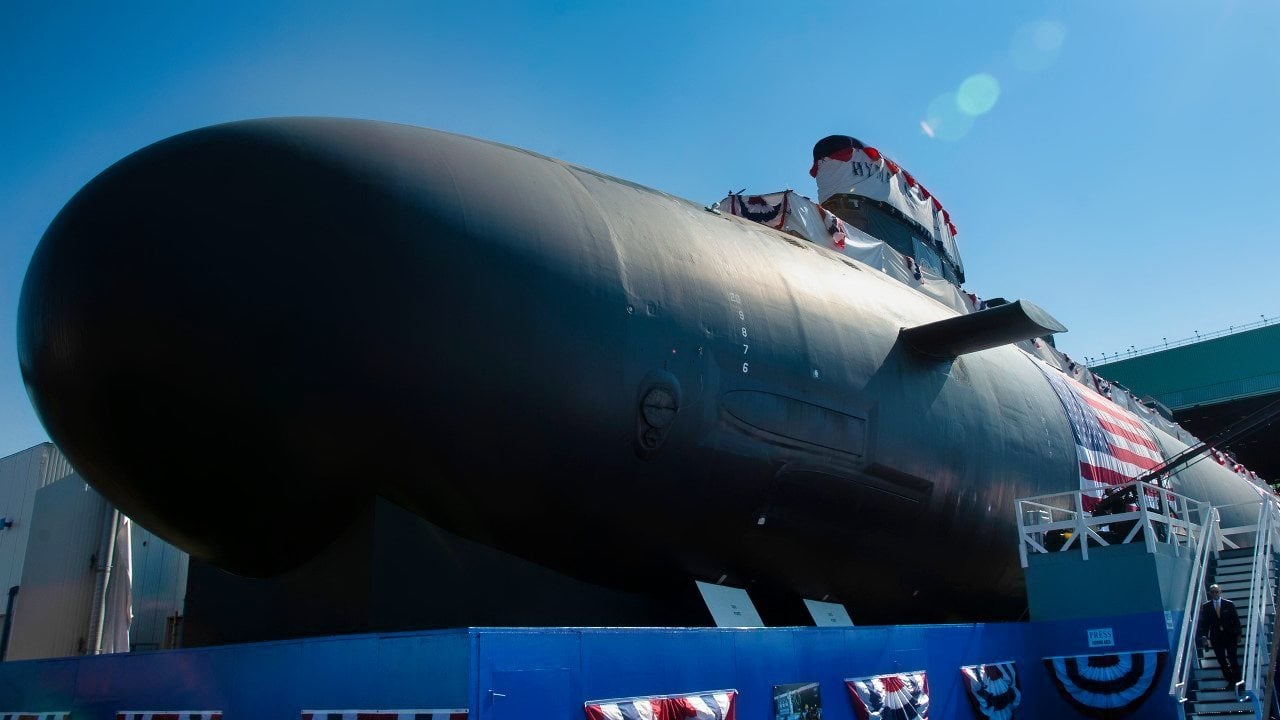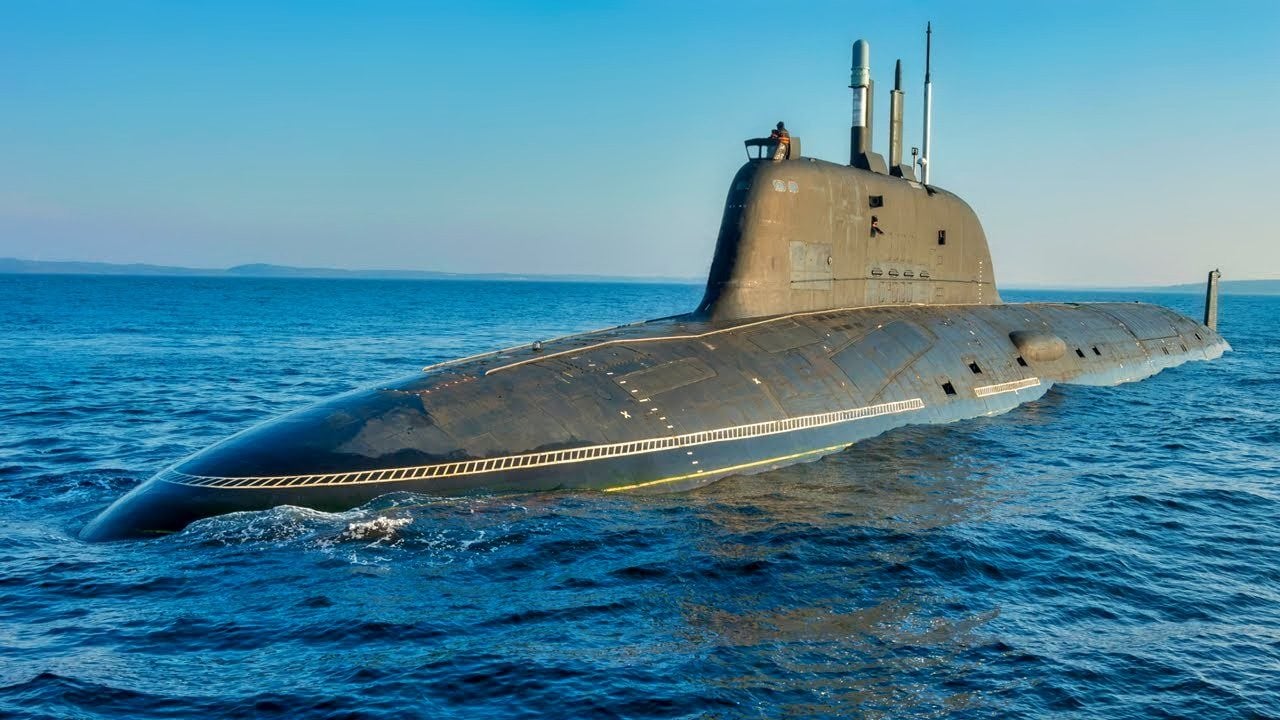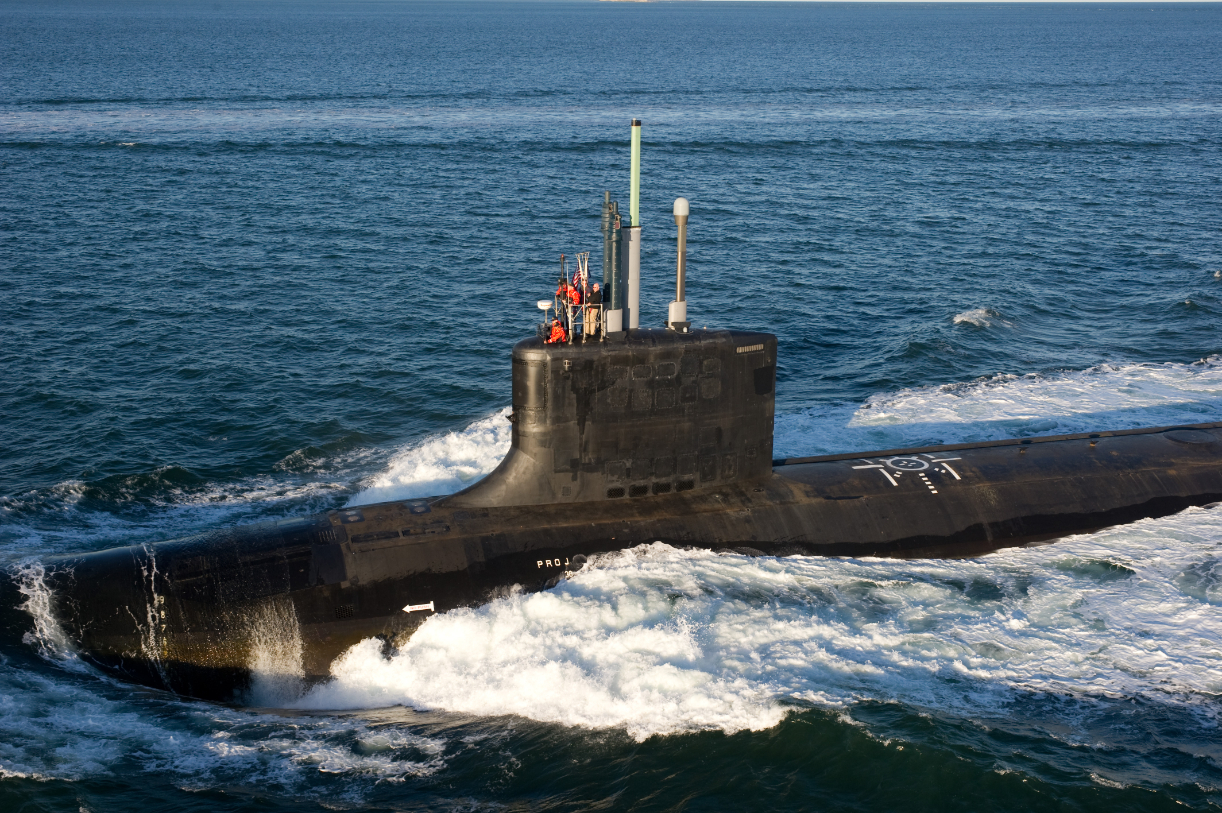The Navy's Block V Virginia-Class Submarines Have Just 1 Mission
The Block V Virginia-class submarines are the latest iteration of the U.S. Navy's advanced fast-attack boats, designed to maintain undersea dominance amid rising threats from China and Russia.
Summary and Key Points: The Block V Virginia-class submarines are the latest iteration of the U.S. Navy's advanced fast-attack boats, designed to maintain undersea dominance amid rising threats from China and Russia.

-The sub has one mission: to fight Russia, China, North Korea, Iran, or any nation that endangers America's interests above or below the waves.
-Featuring significant upgrades such as the Virginia Payload Module (VPM), these submarines can carry up to 40 Tomahawk missiles, enhancing strike capabilities.
-Improved stealth, sonar performance, and advanced sensors ensure operational effectiveness in contested environments.
-However, challenges remain, including shipyard constraints and the need for cost-effective solutions to keep up with global rivals like Russia's Yasen-M-class and China's Type 039C Yuan-class submarines.
America’s Block V Virginia-class Submarines & the Undersea Arms Race
The next great war is already shaping up around us. But you might not have fully noticed it because of the fact that the weapons being developed to fight this most horrific war are invisible to our naked eyes. They are weapons that dazzle across the electromagnetic spectrum, that lash out at the vital-yet-vulnerable satellites dangling in the distant space above heads, and throughout the cyberspace domain.
What’s more, this new war—which can best be described as the final stages of a prewar arms race that will erupt with a ferocity not seen since the last century—is being experienced beneath the waves.
Or, better put, there is an ongoing quest to build the world’s best submarines.
Such is the case with the United States Navy’s Block V Virginia-class attack submarines.
These systems represent the latest iteration of the Virginia-class fast attack boats which were designed to replace America’s ubiquitous, though aging, Los Angeles-class attack submarines. Virginia-class subs are advanced vessels equipped with cutting-edge technology and enhanced capabilities meant to maintain America’s undersea dominance and to support the Pentagon’s National Defense Strategy.
The Virginia Payload Module (VPM)
The Block Vs will feature significant upgrades and changes compared to the previous Virginia-class submarines. These include acoustic superiority design changes to maintain undersea dominance as well as the Virginia Payload Module (VPM). The VPM is a significant upgrade to the Virginia-class fast attack submarines of the U.S. Navy.
It is an 84-foot-long, mid-body section that will be added to the Block Vs, providing them with increased missile capacity (that’s a big deal).
The VPM will be equipped with four large-diameter, vertical launch tubes, each capable of carrying and launching up to seven Tomahawk cruise missiles. This addition will significantly enhance the submarine’s strike capabilities, increasing the total Tomahawk missile capacity from twelve to forty missiles per boat.
The VPM is a critical component of the Block V Virginia-class submarines that play a vital role in maintaining the Navy’s undersea dominance (which is currently under threat by both China and Russia as never before).
More importantly, the VPM will make up for some of the capabilities the Navy lost with the retirement of the Navy’s four guided-missile submarines.
Key Defenses of the Block V
In terms of defenses, the Block V Virginia-class submarines will possess improved stealth capabilities and sonar performance through a new bow conformal array.
These submarines are designed to operate in contested environments and will be a bridge to the upcoming (though, as I have argued, redundant and, therefore, unnecessary) SSN(X) program. These upgrades to the Block Vs focus on enhancing the submarine’s speed, warfighting capability, energy, lethality, and sensors.
Under the Sea: A New (Old) World
But the U.S. Navy is no longer operating in the unipolar era when it could sail unchallenged into any waters and take its sweet time—spending boatloads of easy money—to build next-generation systems.
Today, the Navy faces a radically different, dynamic threat environment, in which there are at least two other major powers challenging the United States: China and Russia.
And they, too, are developing their own answers to America’s Block V Virginia-class submarines.
Russia’s Answer to the Block V Virginia-class Submarine
The Russian Navy’s Yasen-M-class submarine, also known as the Project 885M, is considered one of Russia’s most advanced and capable attack submarines. This boat represents an updated and improved version of the original Yasen class (Project 885).

The Yasen-M-class subs are nuclear-powered cruise missile submarines, designed for a wide range of missions, including anti-submarine warfare (ASW), anti-surface warfare, and land attack.
These Russian boats are equipped with advanced sonar systems, including a conformal array sonar, which enhances their detection capabilities. The Yasen-Ms operate quietly, making it harder for rival sonar systems to detect. It poses a significant complication for American and allied systems and allows for the Yasen-M to operate more effectively in contested environments.
On top of a coterie of cruise missiles for land-attack missions, the Yasen-M is equipped with Russia’s fearsome hypersonic weapon, the Kalibr cruise missile.
China’s Answer to Both the Virginia-class & Yasen-M-class Subs
Meanwhile, the People’s Republic of China has built the Type 039C Yuan-class submarine to counter the Block V Virginia-class submarine (as well as Russia’s Yasen-M-class). This new boat represents a real quantum leap for China’s undersea stealth and sonar technologies.
One of the Yuan-class submarine’s key features is its distinctive angled sail, which is designed to reduce its active sonar detectability. This makes it the world’s first known sub to feature such a design. It’s intended to minimize radar echo and reduce noise generated by unstable vortices, enhancing the submarine’s stealth, maneuverability, and detection capabilities.
This boat carries China’s conventional torpedoes as well as YJ-18 supersonic anti-ship cruise missiles, making it a formidable platform for China to further threaten American surface warships. Its estimated range is around 340 nautical miles, contributing to China’s strategic position in the region.
The Pentagon Needs to Get Real
As for the Block V Virginia-class attack submarine, there’s a problem: The Navy cannot build enough of them, for a reasonable price, in a timely manner. What this means is that the arms race for undersea dominance is being lost by the U.S. Navy.

Pentagon planners will need to factor in the current shipyard woes afflicting the entire fleet, but specifically the Block V Virginia-class submarines, and seek cost-effective remedies (such as restoring some of the older Los Angeles-class attack subs to fighting shape to augment the fewer, more modern submarines in America’s declining fleet).
Author Experience and Expertise: Brandon J. Weichert
Brandon J. Weichert, a National Interest national security analyst, is a former Congressional staffer and geopolitical analyst who is a contributor at The Washington Times, the Asia Times, and The-Pipeline. He is the author of Winning Space: How America Remains a Superpower, Biohacked: China’s Race to Control Life, and The Shadow War: Iran’s Quest for Supremacy. His next book, A Disaster of Our Own Making: How the West Lost Ukraine, is due October 22 from Encounter Books. Weichert can be followed via Twitter @WeTheBrandon.
All images are Creative Commons or Shutterstock.
From the Vault
Russia Freaked Out: Why the U.S. Navy 'Unretired' the Iowa-Class Battleships
Battleship vs. Battlecruiser: Iowa-Class vs. Russia's Kirov-Class (Who Wins?)


